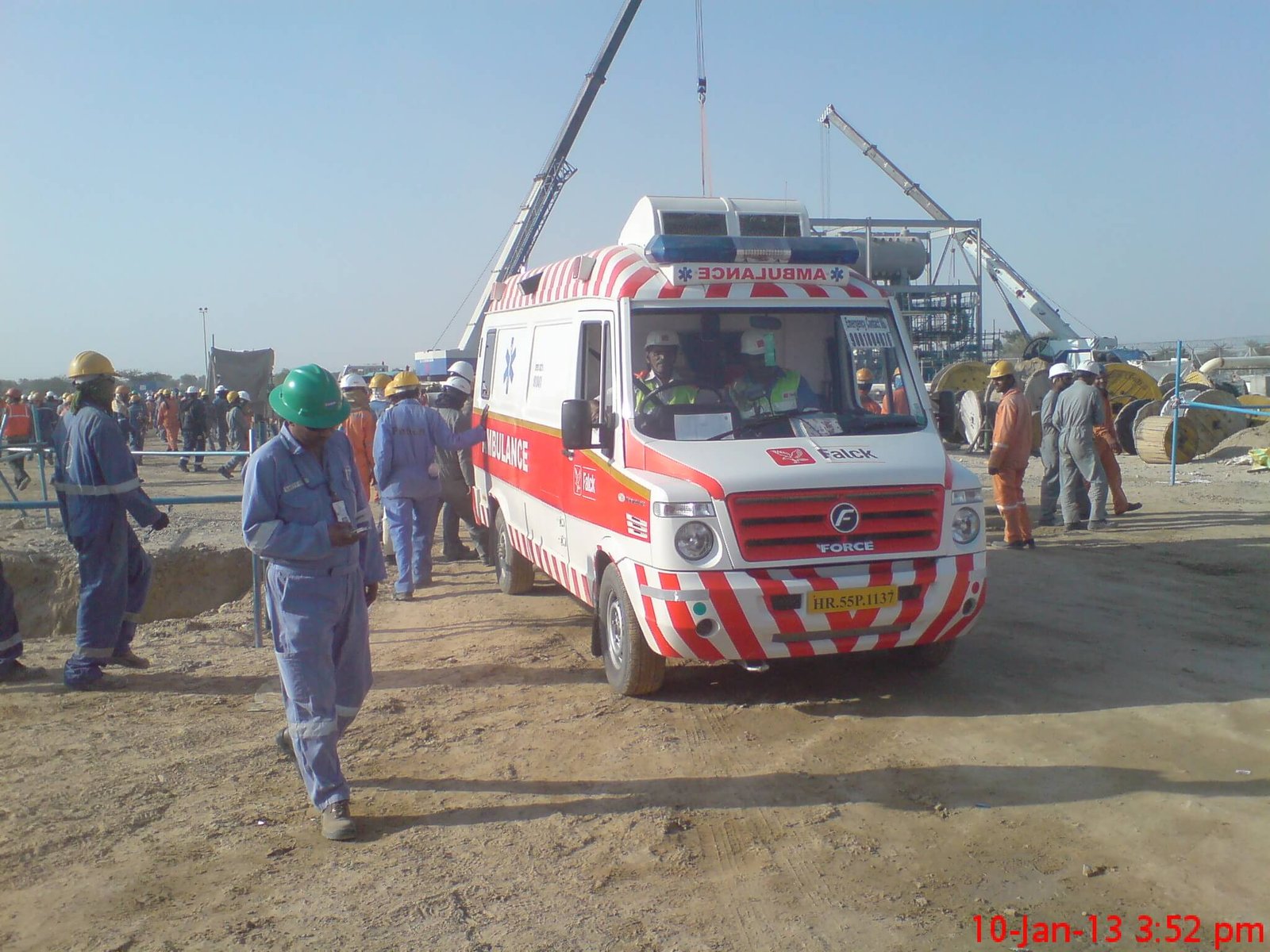Contents
The Employees State Insurance Act, 1948
This Act No. 34 of 1948 (in force from 31-3-1948) was modified in 1950, 1956 and 1957 and amended in 1951, 1966, 1970, 1975, 1984 and 1989. It has 8 Chapter, 100 Sections and 2 Schedules. Chapter 4 of contributions and Chapter 5 of Benefits are more important.
Preliminary (Sec.1): The Act applies to the whole ‘of India to all factories other than seasonal factories. It can be applied to establishment – industrial, commercial, agricultural or otherwise with six month’ notice. Once the Act applies it shall continue even if the number of employees falls below the limit or the manufacturing process (with power) ceases.Definitions (Sec. 2) : Contribution means the sum of money payable to the E31 Corporation by the principal employer in respect of an employee and an amount payable by or on behalf of the employee.
Dependent includes many relatives as prescribed by Sec.2 (6-A).
Employment injury means an injury to employee caused by accident or occupational disease arising out of and in course of his employment (insurable) whether the accident or disease takes place within or outside India.
Employee includes direct, contract or hired persons at main factory or establishment or its department, branch or a place for sale/purchase and also an apprentice (not under the Apprentices Act, 1961). His wage limit (excluding overtime wages) be prescribed by the Central Government.
Family is defined u/s 2(11)
Permanent partial disablement means such disablement of a permanent nature as reduces the earning capacity of an employee in every employment which he was capable of undertaking at the time of the accident resulting in the disablement (All injuries in Part II of the 2nd Schedule).
Permanent total disablement means such disablement of a permanent nature as incapacitates an employee for all work which he was capable of performing at the time of the accident resulting in such disablement. (Ali injuries in Part I of the 2nd schedule or from combination of injuries in Part II thereof).
Temporary disablement means a condition which requires medical treatment and makes the employee temporarily incapable of doing the work which he was doing prior to the time of injury.
Wages includes all remuneration except contribution to any pension fund or provident fund or under this Act, travelling allowance, gratuity and special expenses.
Corporation’s Power for Health Measures (Sec. 19) : The Corporation may, in addition to the scheme of benefits, promote measures for the improvement of health and welfare, rehabilitation and reemployment of insured persons from the funds of the Corporation.
Purposes of the ESI Fund (Sec. 23)
- Payment of benefits and medical treatment to insured persons and their families.
- Expenditure of hospitals, dispensaries, medical and ancillary services, for the insured persons and their families.
- Contribution to State Govt, local authority or any private body or individual towards cost of medical treatment to insured persons and their families, including cost of building and equipment.
- Expenditure for improvement of health, welfare, rehabilitation and re-employment of insured or injured persons.
- Payment of fees salaries, allowances of the members, officers and staff.
- Payment of cost of auditing accounts, courts set up under the Act, contract and cost of any legal or court proceedings.
Contributions (Chapter-4, Sec 38 to 45-1): Two types (i) Employer’s contribution and (ii) Employee’s contribution. Rates may be prescribed by the Central Government. Payment becomes due on the last day of the wage period. Interest 12% p.a. or more for the late payments. It is recoverable as an arrears of land revenue. The principal employer shall pay both the contributions and can recover from the employees or their immediate employer (e.g. contractor) their part. Register of employees, contributions necessary and returns are also required.
ESI Inspectors have powers to visit factories, establishments etc. and to ask any principal or immediate employer to furnish necessary information, account books, records etc. regarding employment of persons, payment of wages etc. and can make copies also for the purposes of this Act.
Benefits (Chapter-5, Sec. 46 to 73 I): Insured persons, their dependants or other persons mentioned can get following benefits under the Act and no similar benefits under any other Act. Though they can get similar benefits available under service conditions, customary concession, sickness leave, motor accident claims under the Motor Vehicles Act and damages! compensation for injuries due to the negligence of the employer (Judgments).
- Sickness benefit: Periodical payments for sickness certified by a Doctor. Eligibility, rates and conditions may be prescribed by the Central Government.
- Maternity Benefit: Periodical payments to an insured woman in case of confinement, miscarriage, sickness due to pregnancy, premature birth etc. on medical certificate. Eligibility, rates, period and conditions may be prescribed by the Central Government.
- Disablement benefit: Periodical payments to an insured person for disablement due to employment injury and certified by a doctor.
(a) For temporary disablement of more than 3 days (excluding the day of accident) and
(b) For permanent disablement total or partial this benefit is available at the rate, period and condition prescribed by the Central Government.
An accident shall be presumed as arisen in course of employment, in the absence of evidence to the contrary. Benefit is available for accident happening while acting in breach of regulation or while travelling in employer’s transport or while meeting emergency and acting for the employer’s trade or business.
- Dependants’ benefit: Periodical payments to the dependants of an insured person who dies due to employment injury. The rates, period and conditions may be prescribed by the Central Government.
- Medical benefits Payment for medical, surgical and obstetric treatment for and attendance on insured persons, by the State Government or the Corporation.
- Funeral expenses: Payment to the family member or any other person who actually incurs expenditure on the funeral of the deceased insured person.
The claims should be made within 3 months of the death of the insured person
Occupational Disease as an Employment injury: Contracting of any disease mentioned n the Third Schedule and in its-
Part A – without any period in that employment, Part B for working more than 6 months in that employment, or Part C,-for working such period as the Corporation specifies, Shall be deemed to be an “Employment injury arising out of and in the course of employment”.
Any question regarding permanent disablement or proportion of loss of earning capacity or any such assessment, shall be determined by a Medical Board. An appeal against the decision of the medical board may lie with the Medical Appeal Tribunal. Both the Board and the Tribunal can review their decisions if satisfied by fresh evidence.
The corporation may, with the approval of the State Government, establish and maintain in the State hospitals, dispensaries, medical and surgical services for the benefit of the insured persons and their families.
The right to receive any payment of any benefit is not transferable or assignable. Disablement benefit cannot be commuted for a lump sum amount.
Sickness or disablement benefit for temporary disablement cannot be availed if the employee works on that day (of claim) or remains on leave or on a paid holiday or on strike.
Recipient of sickness or disablement benefit will observe conditions to remain under medical treatment at a place provided under this Act, to carry out medical instructions, not to leave the area, to allow himself for medical examination and not to do anything which may retard chances of recovery.
An insured person cannot get for the same period (a) both sickness and maternity benefit or (b) both sickness and temporary disablement benefit or (c) both maternity and temporary disablement benefit. When a person is entitled to more than one such benefits, he has to choose any one benefit.
The corporation has right to recover where a principal employer fails or neglects to pay any contribution, or any amount for excessive sickness arise due to insanitary working conditions or not observing any health regulations.
If any person receives any benefit unlawfully, he shall be liable to repay to the corporation that amount.
If any person dies, any cash benefit payable to him shall be paid to his nominee/representative up to and including the day of his death.
No employer can reduce wages or benefits payable by him under service conditions because of the benefits conferred by this Act. No employer can dismiss or punish employee during period of sickness, maternity, temporary disablement or certified illness etc. Notice of dismissal, discharge or reduction during such period shall be invalid or inoperative.
A person who misuses the benefit given under his Act, will be disentitled by the Central Government after giving him an opportunity of being heard.
Miscellaneous (Sec. 87 to 100): The Government has power of exemptions. Rule making powers lies with the Central as well as the State Governments. The Corporation has power to make regulations.
The Employees’ State Insurance (Central) Rules 1950
They came into force from 22-6-1950. The Chapter-6, sections 47 to 62 are important as they provide further details on the subject of provident fund, wage limit, rates of contribution and benefits. Their summary is as under:
P.F: The Corporation shall establish, maintain, and contribute to the “ESIC Provident Fund” for insured employees. It shall form a committee and regulations for its working.
Contribution period and Benefit period:
They are prescribed as under
| Contribution period | Corresponding Benefit period |
| 1st April to 30th September | 1st January to 30th June of the year following |
| 1st Oct. To 31st March of the year following | 1st July to 31st December |
In case of a person who becomes an employee for the first time, the first contribution period for him will begin from the date he enters into insurable employment in the contribution period current on that day (i e. the date of employment) and his corresponding benefit period will begin on the expiry of nine months from the date of such employment.
Wage Limit for Coverage: Up to Rs10000/ p.m. w.e.f. 1-4-2006.
Rates of Contribution: Employer’s contribution 4.75% of the wages payable to an employee Employee’s contribution 1.75% of his wages (w.e.f. l. 1-1997)An employee whose average daily wage is up to Rs. 50/is exempted from paying his contributor though the employer’s contribution in respect of such employee, shall continue (News, 7-9 -97)
Standard benefit rate: As per Table. u/r 54 Revised with 18 entries w. e ,f. 11-1997. Sickness benefit: It is available if the contribution is paid for 50% of days of the contribution period for the first two days of sickness the benefit is not available. For maximum 91 days in any two consecutive period the benefit can be available. Payment rate is the standard benefit rate u/r 54.
Maternity benefit: At least 70 days contribution during preceding two consecutive contribution periods make the insured women eligible for this benefit. For maximum 12 weeks the benefit is available. Medical proof is necessary. Payment rate is twice the ‘standard benefit rate’ u/r 54.
Disablement benefit: It is available for the disablement period of more than 3 days (excluding the day of accident) and for the whole period of permanent disablement or for life. Daily rate of payment shall be 40% more than the standard benefit rate u/r 54, and this rate shall be called the “full rate”; For temporary and permanent total disablement, full rate is available, but for permanent partial disablement from injury specified in Part II of the 2nd schedule, at such percentage of the full rate and for injury not specified in that schedule, at proportionate to the loss of earning capacity (assessed by the medical certificate) the benefit will be available.
Dependants’ benefit: To widow 3/5 of the full rate (till life or remarriage), to son 2/5 of the full rate (until he attains 18 years age), to unmarried daughter 2/5th of the full rate (until the age of 18 years or marriage whichever is earlier). If no widow or children, then to a parent or grandparent for life 3/ 10 of the full rate, to any other male dependent till his age of 18 and to any other female dependent till the age of 18 or marriage, whichever is earlier or ii widowed, until her age of 18 or remarriage whichever is earlier at 2/10 of the full rate. Total rate shall not exceed full rate and the amount shall be equally divided among the dependants.
Funeral expenses: Rs. 2500/from 1-10-2001
The Employees’ State Insurance (General) Regulations, 1950
The corporation has made u/s 97, these regulations provide further details. Some summary is given below:
Provisions of identity card, family identity card, Inspector, Insurance Medical Officer, Insurance Number, local office, regional office, regional director, local committees are explained.
Registration of factories, establishments and families is required. Return of contributions in Form No. 6, in 4 copies is to be sent to the ESI office. Contributions should be paid within 21 days of the last day of the month in which it fall due. In case of permanent closure, it should be paid on the last day of closure. For late payment, interest at 15% p.a. is payable. In addition to this, damages are also payable as under:
| No. | Delay Period | % p.a. damages |
| 1. | Up to 2 months | 3 |
| 2. | 2 to 4 months | 10 |
| 3. | 4 to 6 months | 15 |
| 4. | 6 months and above | 25 |
Register of employees should be in Form-7.
Benefits (Chapter3, Regulation 44 to 95E): For any benefit, proper claim form should be filled in. Claim becomes due from the date of medical certificate and it shall be certified by the Local Office, which can ask further evidence also. Medical certificate from Insurance Medical Officer is necessary.
Benefits (first payment) are payable as under:
| No. | Type | To be paid within |
| 1. | Sickness benefit | 7 days |
| 2. | Funeral expenses | 15 days |
| 3. | Maternity benefit | 14 days |
| 4. | Temporary disablement | 30 days |
| 5. | Permanent disablement | 30 days |
| 6. | Dependants’ benefit | 90 days |
Disablement Benefit: Art employee will inform employer about accident to him: Employer will record it in an Accident Book in Form No. 15 and will report to the Local Office in Form No. 16 within 24 hours. For occupational disease specified in 3rd schedule no such notice is necessary but information required by the Local Office shall be given. Employer shall arrange for the first aid.
Dependants’ benefit: Death of an insured person is to be reported immediately to the Local Office and his body, shall be disposed of after examination (and post-mortem if necessary) by Insurance Medical Officer or other Medical Officer. Death certificate in Form 17 shall be issued to the dependants. Claim for dependants’ benefit will be submitted in Form 18 to the Local Office, with documents and proofs prescribed u/r 80.
Maternity Benet: give notice in Form 19 and Form 20 to the Local Office.
An insured woman will pregnancy certificate in Other Forms 21, 22, 23 are also required as per Reg. 88. She may loose benefit if refuse for medical examination by a female doctor or midwife.
Funeral expenses: Death certificate in Form 17 and claim Form 25-A are prescribed.
Medical benefit: A person receiving disablement benefit can also get medical benefit. This benefit is available after payment of contributions for 50% days of the contribution period and for a period of 3 months if he is continued in the service for 3 months or more.
Some 28 forms have been prescribed under these Regulations.
Criticism: This ESI scheme logically and theoretically seems beneficial for well being of the workers but in its practice of more than 45 years it has gained heavy criticism because of its-
- Poor administration.
- Incapacity to provide speedy service to thousands of workers and their families.
- Insufficient hospitals, dispensaries, doctors, facilities and staff.
- Rude and rigid behaviour with workers who need love and affection.
- Complexity of forms and procedure.
- Hardship to workers in going to limited centres and at a longer distance.
- Poor quality of medicines and treatment.
- No real interest in worker’s welfare and referring him here and there
- More stress in collecting money than disbursement of benefits to workers.
- Profit making attitude instead of charitable.
Because of above factors not only employers but employees and their trade unions have also opposed this scheme and resisted against its forceful application. Insured employees prefer to go to private doctors and hospitals for better treatment. They are loosing faith from ESI doctors, their treatment and medicines, Only poorer workers go there under compulsion.
As per one report of 25-8-1997, even after raising the eligibility wage limit from Rs. 3500 to Rs. 6500 per month and similar increase in employers’ contributions there is no improvement in EST medical services. On the contrary the condition is deteriorated. Despite of increase in number of employees and income of the Scheme, strength of doctors is reduced. In 1995 there were 3160 doctors which reduced to 3076 in 1996. In 1991 there was, one doctor per 2127 members while in 1996 that proportion was one doctor per 2374 members! The Government gives subsidy also. Even then the service is not satisfactory
It is suggested in this report that the Government should give Health Insurance Policies to the members to make the Scheme more meaningful.
In another press note of Financial Express it is confessed that many States are giving less importance to the Scheme and the Corporation has become a silent spectator and the quality of the Scheme has gone down. The Central Administration is unable to Say full attention and therefore it is, now, decided to establish Stale Corporations under the control of the Central ESI Corporation.
Where ESI Scheme is made applicable, a trend is noticed of increase in accidents. This may be due to a wrong approach of workers to take benefit of accident leaves. This again adds to the loss of national production.
ESI authorities and corporation has to find and apply remedial measures to above problems.
Expansion of infrastructure, HRD training to doctors and staff, loving and charitable attitude, less contribution and higher benefit utilizing full income, better hospitals, nice dispensaries, good facilities and speedy service can certainly change its present scenario.





